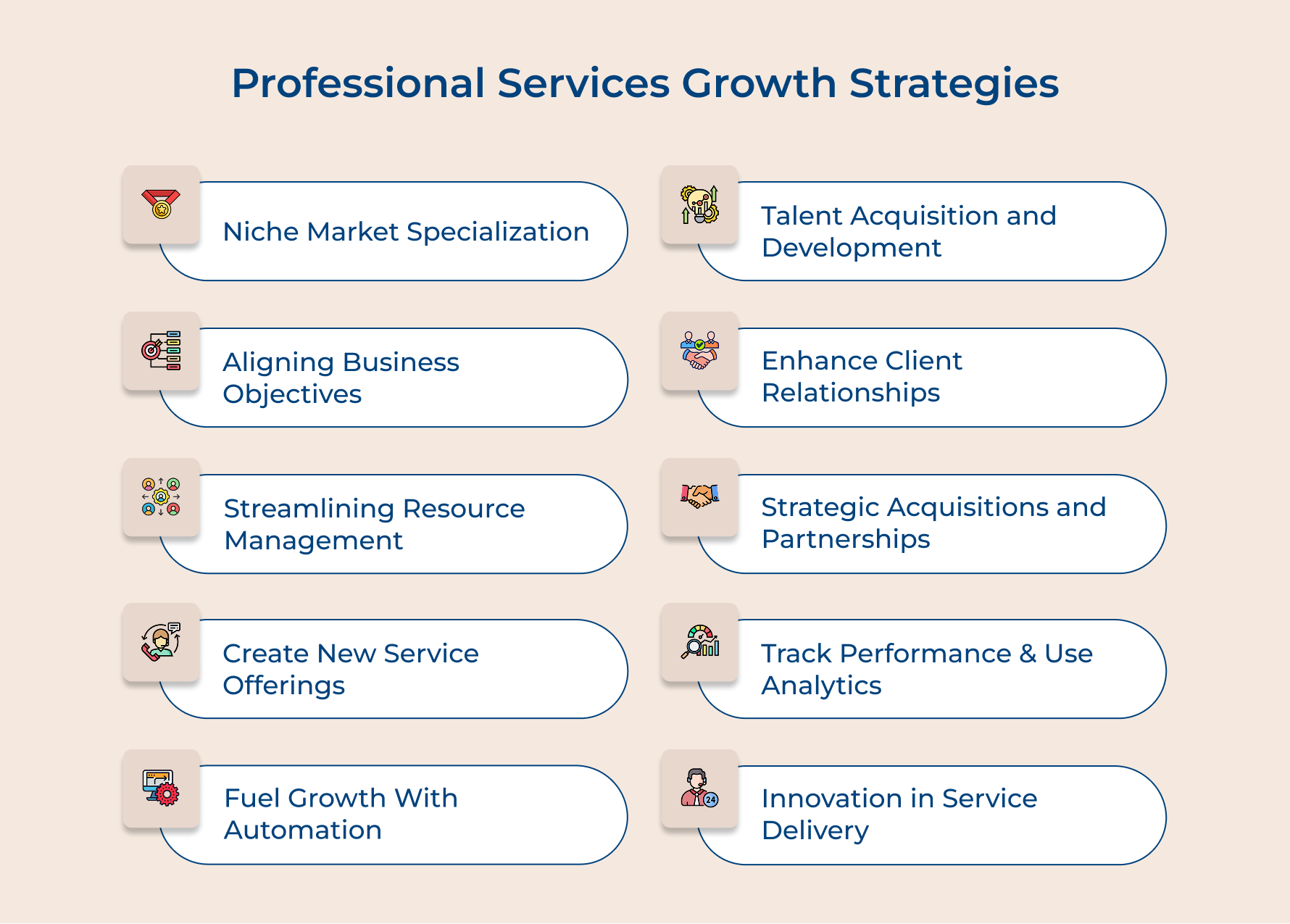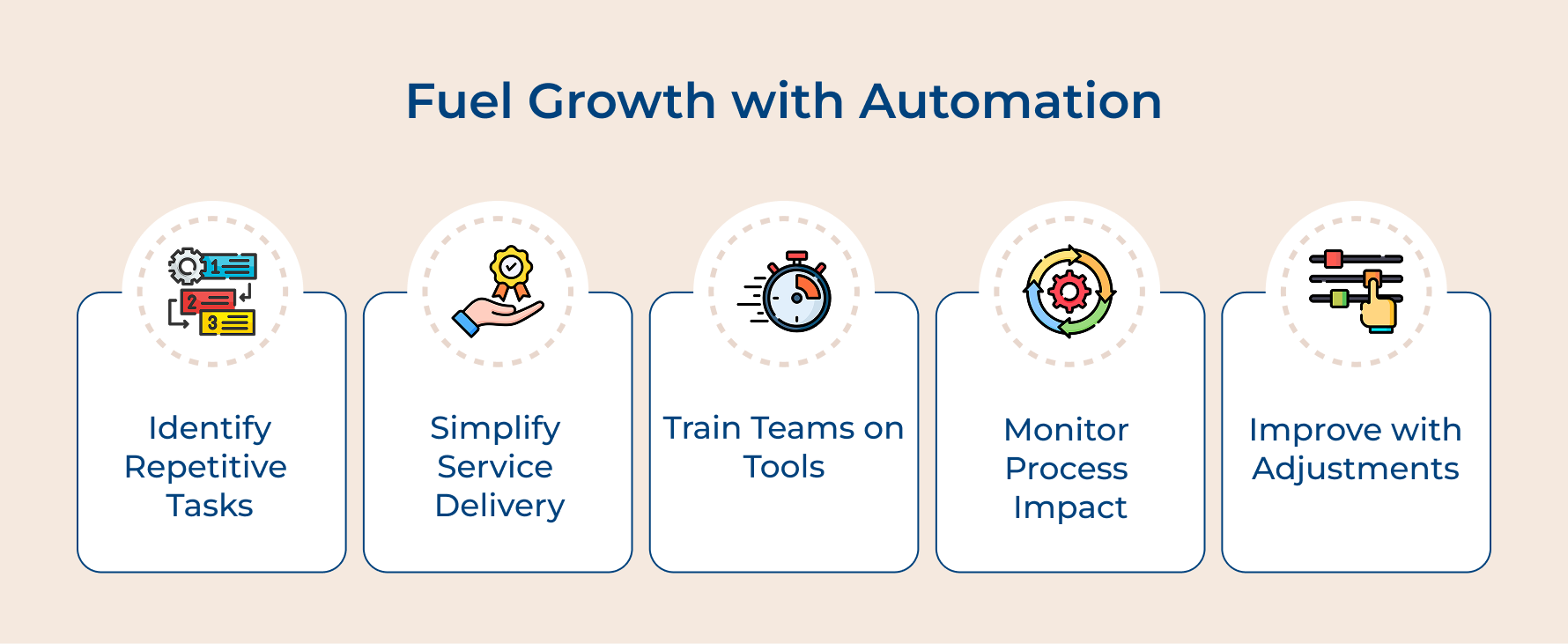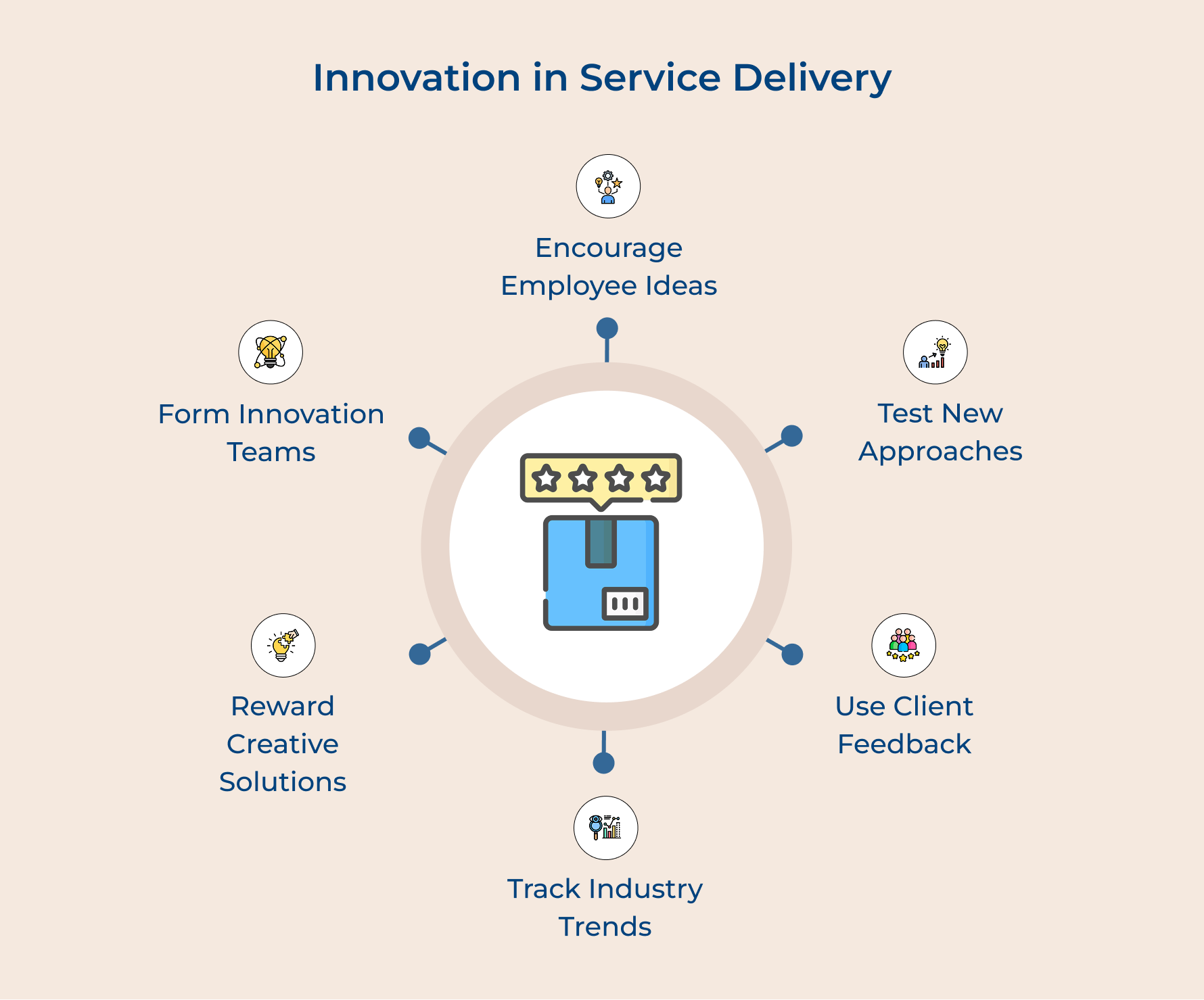Top 10 Professional Services Strategy for Firm’s Growth

Key Highlights:
- A professional services strategy focused on niche market specialization helps build credibility and reduce competition while enabling premium rates.
- Aligning all activities with business objectives ensures that every decision contributes to growth and efficient resource allocation.
- Automating routine tasks boosts operational efficiency, minimizes errors, and supports smooth growth without needing to expand staff.
Achieving growth in the professional services industry requires more than just providing exceptional service. With increased competition and ever-changing market demands, firms must continually adapt as well as innovate to stay relevant.
Let us dive into effective professional services strategy for firms, offering insights on how to expand your reach, retain clients and maximize revenue.
What is a Professional Services Strategy?
Professional services strategy is a planned approach used by consulting firms, law firms, and accounting firms. It helps them grow, increases revenue as well as stay competitive. These strategies focus on leveraging expertise, relationships, and intellectual capital to achieve sustainable business growth.
A clear set of growth strategies plays an essential role as roadmaps for service firms operating in an increasingly competitive landscape. Modern dynamic business environments demand well-defined growth strategies to help firms differentiate themselves, adapt to market changes, and maintain profitability.
Key objectives:
- Market share and client base expansion through targeted business development initiatives as well as strategic positioning in high-growth sectors.
- Service offerings and capabilities enhancement via new expertise areas, technological innovation adoption, as well as creation of value-added solutions addressing evolving client needs.
- Operational efficiency and profitability optimization using improved resource allocation, streamlined processes, along with effective pricing strategies.
- Strong talent pipeline development focused on attracting and developing while retaining skilled professionals who deliver high-quality services and drive innovation.
10 Strategies for Professional Services Growth
Growing a professional services business requires a strategic approach to stand out in a competitive market. Here are ten proven strategies to drive sustainable growth and long-term success.
1. Niche Market Specialization
In a crowded market, being a specialist rather than a generalist can give your firm a competitive edge. A focused approach helps you build credibility, command premium pricing, and improve efficiency.
Why Specialization Works
- Clients trust specialists who understand their industry inside out.
- Narrowing your focus reduces competition and helps you charge higher rates.
- A well-defined niche makes marketing and client acquisition easier.
How to Develop a Focused Approach?
Identify High-Potential Niches
- Research underserved markets or emerging industry needs.
- Analyze market data, competitor positioning, and client demand.
Develop Specialized Expertise
- Build deep knowledge in your chosen niche.
- Create training programs for your team to ensure consistent service quality.
Tailor Your Marketing Strategy
- Craft targeted messaging that highlights your expertise.
- Develop thought leadership content (blogs, case studies, whitepapers).
- Network and build strong industry connections.
Key Component
- If you’re in accounting services, consider specializing in areas like tax planning for startups, CFO advisory for small businesses, or compliance for specific industries.
- Expand your range of services within your niche—offering consulting, automation, or tech integrations can make your firm indispensable to clients.
2. Aligning Strategy with Business Objectives
Think of your business like a rowing team—if everyone paddles in different directions, you’ll never reach your destination efficiently. Strategic alignment ensures that all activities, resources, and decisions support your core business goals, creating a clear growth path.
Aligning matters because businesses get to save time and money on efforts that contribute to real growth. A focused strategy helps:
- Every project and investment supports your bigger business goals.
- A clear framework guides choices at every level.
- Everyone understands their role in achieving company success.
How to Achieve Strategic Alignment:
- Set clear business goals: Define what success looks like and ensure every department knows its role.
- Track progress with KPIs: Use key performance indicators (KPIs) to measure success and adjust strategies when needed.
- Regular check-ins & adjustments: Review strategies quarterly and refine them based on performance data.
Example in Action
Imagine an accounting firm wants to expand its range of services by offering CFO advisory services. If the marketing team keeps promoting only tax filing and bookkeeping, there’s a misalignment. Instead, the firm should:
- Update marketing efforts to highlight CFO services.
- Train the staff to handle strategic financial consulting.
- Set KPIs to measure how many new CFO clients they acquire.
3. Streamlining Resource Management for Scalability
Growing your business doesn’t have to mean skyrocketing costs or team burnout. Efficient resource management helps you handle a growing customer base while maintaining service quality and profitability.
Start by using project management tools to track workloads and resource allocation. Standardized processes and templates can streamline operations, ensuring consistency across a wide range of services. Automation also plays a big role—freeing up time by handling repetitive tasks.
A flexible staffing model can be a game-changer. Instead of relying only on full-time employees, mix in trusted contractors to handle peak workloads. This approach allows you to maintain a balanced client mix without overburdening your core team.
4. Create New Service Offerings
Your clients’ needs are always evolving, and your firm should too! Adding additional services not only strengthens client relationships but also opens new revenue streams and keeps you ahead of the competition.
How to Grow Your Service Portfolio
- Identify emerging needs: Conduct client surveys and market research to spot gaps in your offerings.
- Test before you scale: Run pilot programs with trusted clients to refine new services.
- Ensure smooth implementation: Train your team, document processes, and maintain quality control.
- Align with your business model: Introduce services that complement your core strengths for seamless integration.
Continuously innovating and expanding enables your business model to stay relevant, helping you grow while delivering more value to clients.
5. Fuel Growth with Automation
Automating routine tasks helps streamline workflows, boost efficiency, and maintain quality standards without overloading your team. By reducing manual effort and minimizing errors, automation enables firms to scale smoothly without constantly adding staff.
To get started, identify repetitive tasks that can be automated without affecting quality. Investing in the right tools can simplify multiple aspects of service delivery, making operations more seamless.
Training your team on these new systems is crucial to ensure a smooth transition and maximize efficiency. It’s also important to continuously monitor automated processes, track their impact, and make necessary adjustments for ongoing improvement.
6. Talent Acquisition and Development
Your people are your biggest asset, and investing in them is key to long-term success. A strategic approach to hiring, developing, and retaining skilled professionals ensures consistent service quality as well as fuels business growth.
Attract and Retain Top Talent by,
- Hiring with purpose: Develop strong recruitment strategies to find the right talent for your firm’s needs.
- Supporting career growth: Provide clear career progression paths and fair compensation structures.
- Prioritizing learning: Offer training programs along with other mentorship opportunities to help employees upskill.
- Creating a positive culture: Create an environment that values innovation, teamwork, and professional growth.
When employees feel supported, they’re more engaged, productive, and committed to your firm’s success.
7. Enhance Client Relationships
Building strong client relationships isn’t just about delivering services—it’s about consistent communication, adding value, and proactively managing their needs.
Strong relationships also reduce client acquisition costs and provide valuable insights for improving your services. By actively listening to clients and addressing their evolving needs, firms can stay ahead of the competition as well as enhance client satisfaction.
Implementing client feedback systems, developing structured account management strategies, and offering value-added services can make a significant difference.
Actionable Tips:
- Schedule quarterly business reviews with key clients to discuss their goals and overall satisfaction.
- Maintain a client communication calendar to ensure regular engagement beyond project-related discussions.
- Develop personalized value propositions and strategic growth plans for high-priority accounts.
8. Strategic Acquisitions and Partnerships
Growing through carefully selected mergers, acquisitions, or strategic partnerships that expand capabilities, market reach, or client base.
Acquisitions and partnerships can accelerate growth, add new capabilities, as well as enter new markets faster than organic growth alone. They provide immediate access to talent, clients, and revenue.
Identify potential partners or acquisition targets aligned with strategic goals. Conduct thorough due diligence and create integration plans. Manage relationships to ensure mutual benefit.
Actionable tips:
- Develop clear criteria for evaluating potential partners or acquisition targets.
- Create comprehensive due diligence checklists covering financial, operational, and cultural factors.
- Design detailed integration plans addressing technology, processes, and people.
9. Track Performance & Use Analytics
Data is a powerful tool that helps businesses measure performance, spot trends, and make smarter decisions. By leveraging analytics, firms can gain objective insights into what’s working, where improvements are needed, and how to stay ahead of market changes.
To make the most of analytics, it’s essential to track key performance indicators (KPIs) that align with business goals. Regularly analyzing these metrics provides valuable insights that can shape service delivery, improve client experiences, and optimize internal processes.
Setting up tracking systems, establishing reporting schedules, and sharing actionable insights across teams can make a big difference. When businesses embrace data-driven decision-making, they become more agile, proactive, and equipped to drive sustained success.
10. Innovation in Service Delivery
Staying ahead in the professional services industry means continuously improving how services are delivered. Whether through new methodologies, advanced technologies, or fresh approaches, innovation enhances client value and boosts operational efficiency.
Embracing innovation helps firms stand out, improve service quality, and meet evolving client expectations. It creates a competitive edge and opens doors to new opportunities, ensuring long-term success.
Encouraging a culture of innovation, welcoming new ideas from employees, and experimenting with improved service delivery methods can drive meaningful change. Keeping an eye on industry trends and gathering client feedback also helps identify areas for improvement.
Pro Tips:
- Form an innovation committee to explore as well as implement new service delivery methods.
- Develop a structured process for testing and rolling out innovations with minimal disruption.
- Introduce incentive programs to encourage employees to contribute fresh ideas and solutions.
Sustainable Professional Service Strategy for Long-Term Success
A well-defined professional service strategy is key to staying competitive and ensuring long-term success. Continually refining your service offerings, improving client engagement, and embracing innovation can help your firm build a solid foundation for growth.
Focusing on value-driven outcomes and keeping up with industry trends will allow you to meet client expectations as well as drive sustainable results. An adaptable and thoughtful strategy will be the cornerstone of your firm’s future success.
Limit time — not creativity
Everything you need for customer support, marketing & sales.
Neeti Singh is a passionate content writer at Kooper, where he transforms complex concepts into clear, engaging and actionable content. With a keen eye for detail and a love for technology, Tushar Joshi crafts blog posts, guides and articles that help readers navigate the fast-evolving world of software solutions.


